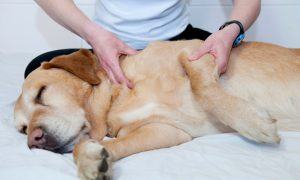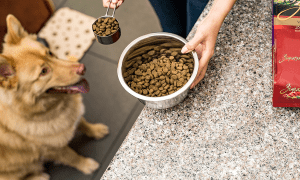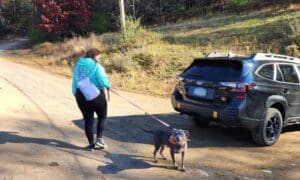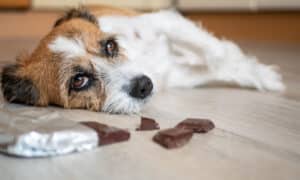“This post contains affiliate links, and I will be compensated if you make a purchase after clicking on my links.”
You do need to be a professional massage therapist to give your dog a massage. These simple steps will bring you closer and help your dog feel better.
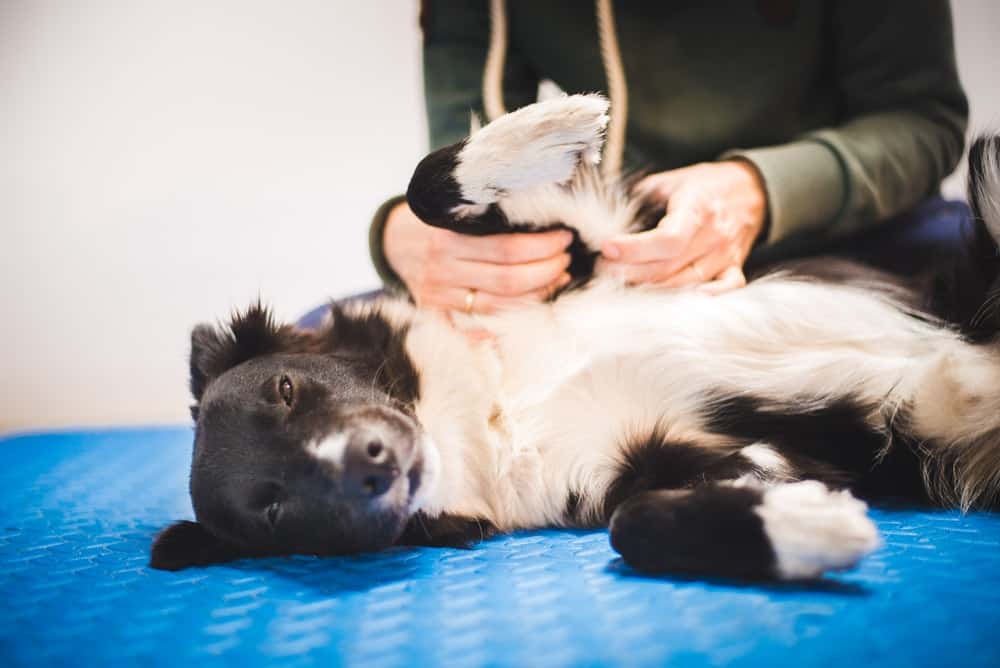
Most of us all know the warm feeling we experience after receiving a massage and how stress-free and relaxing it is. Massages have many health benefits for the body and, though it may surprise you, it’s not just for us people.
Canine massage therapy can stimulate your dog’s health. Touch applied during a massage improves a dog’s physical and emotional well-being. Massages are beneficial for all dogs but especially those that are nervous, anxious, or hyperactive. Other benefits include:
· Induce relaxation
· Increase oxygen the blood
· Relieve pain relief
· Improve flexibility
· Improved immunities
· Reduce age-onset ailments
· Reduce discomfort associated with arthritis and hip dysplasia
· Relieve muscle tension, soreness, weakness, and spasms
Relieve stress
Stress affects every part of your or your dog’s body. Tension in humans can lead to stiff muscles and, in some cases, pain. The Mayo Clinic reports that stress can also cause headaches, fatigue, digestive issues, and disturbed sleep.
Just like people, dogs have stressful moments or days too. They also might have sore muscles or joints, especially as they get older. Massage is a great way to destress your pet and promote the release of tension. Similarly, if your dog is in pain or has had an injury which is the reason for a massage, heat or ice can also be added.
Different strokes
You don’t have to be an expert to give your dog a great massage experience. Just use gentle motions and pressure while watching for signs of distress. These three techniques are commonly used by professional massage therapists and are ideal for a human or canine massage.
Effleurage—this type of stroke is long and soothing strokes. They warm up the underlying tissues, encourage blood flow, and begin the relaxation process.
Petrissage—this massage type involves kneading or rolling motions. They are used to increase blood flow and lymphatic drainage and stimulate toxin removal trapped in the tissues.
Compression—achieved by gently pressing the muscle against the bone, which helps spread muscle fibers and increase circulation.
How to massage your pup
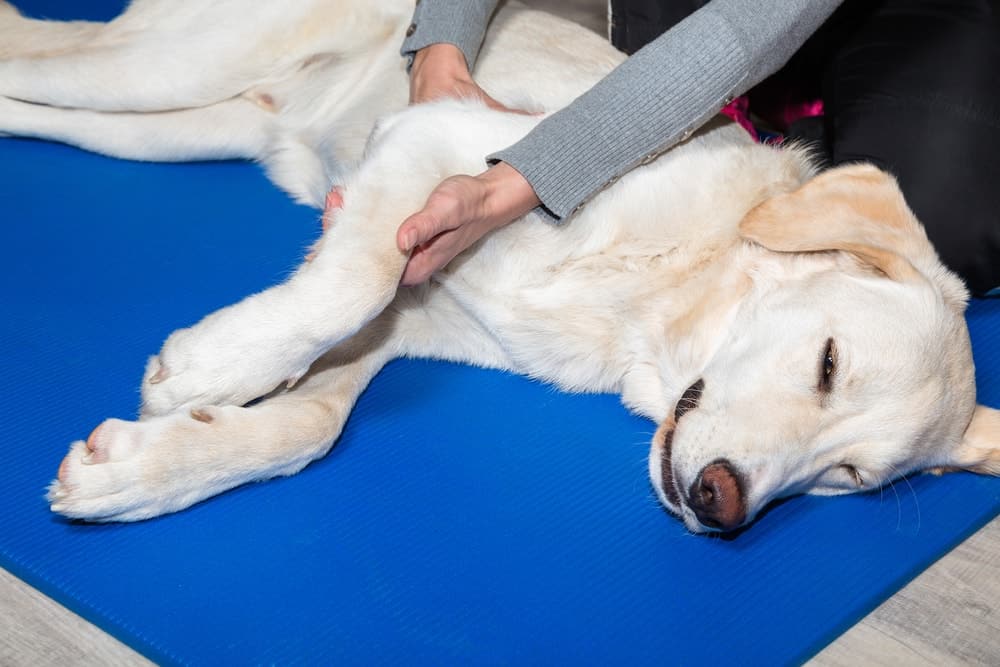
Dogs have anatomy different from humans. They are typically much smaller, so the way to massage them is different. A dog’s massage requires gentle, small motions to ensure comfort throughout the session. These steps will help you ensure your pet has a pleasant experience you intend.
Massage
1. Use the effleurage technique to pet your dog with long, slow strokes while speaking softly.
2. Begin with the ears and massage each. (Watch for a head shake if you tickle the ear hairs!)
3. Using gentle pressure, massage between the eyes, around the eye socket, and along both jaws.
4. Move to the neck, gently rubbing with small, circular motions.
5. Massage the shoulders.
6. Move to the chest and down each front leg.
7. Rub the belly from stem to stern.
8. Massage each paw.
9. Massage the back going up and down along each side of the spine from the shoulder to the tail.
10. Apply petrissage to the back hips and legs.
11. Squeeze down along the tail gently and firmly. Do not pull.
Your dog should now be calm and free of stress.
Tips
1. Wait until your dog is calm and submissive. It is difficult to massage an agitated dog—it may help to start with a long walk.
2. Pay special attention to the neck and shoulders because your dog cannot easily reach these areas.
3. If your dog resists or reacts negatively to any area, skip it and go to the next area.
4. Find a comfortable place with room to spread out. It is just as important for the person providing the massage to be comfortable as it is for the recipient.
5. Remove collars or harnesses so the massage will not be interrupted.
6. If you feel a tight ball of muscle during the massage, use gentle compression to help release it. Apply even pressure to the top of the knot using your thumb, hold for twenty seconds, then release.
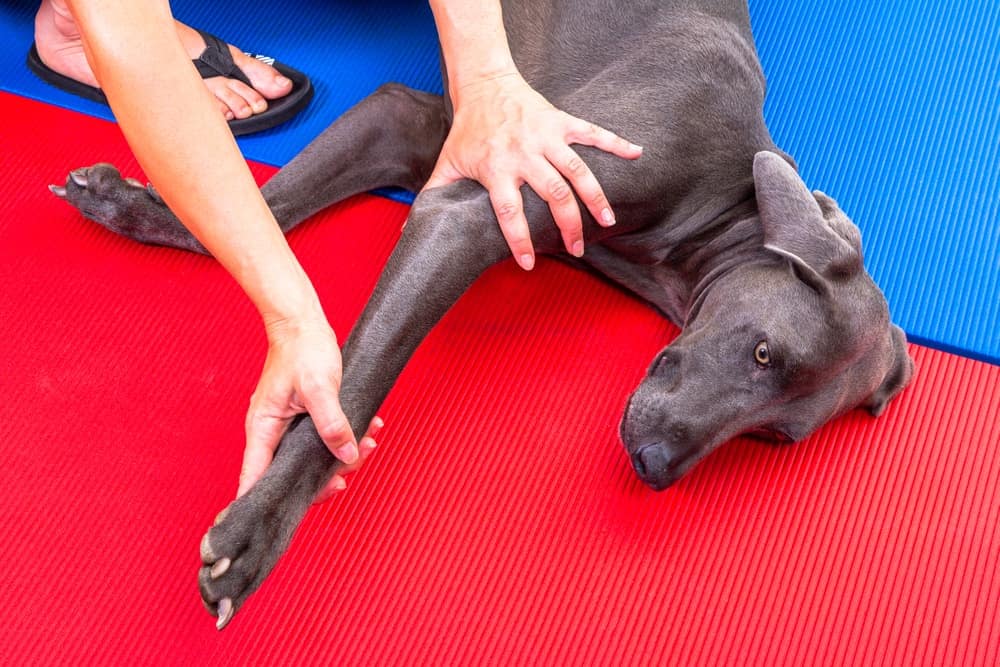
Everyone loves a massage
Whether you have a puppy or a senior, your dog will benefit from a massage and the time spent with you. Massages increase circulation for our best friends and us and help us destress. They have been shown to lower blood pressure, improve the movement of lymphatic fluid through the body, bolster the immune system, promote healthy digestion, encourage deeper breathing, and stimulate endocrine activity. Even without all those health benefits, massages just feel good.


